Ceramics and Culture, Paul Barchilon
- BAYT AL FANN
- Dec 13, 2021
- 8 min read
Updated: Dec 14, 2021
Ceramic artist Paul Barchilon creates intricate designs that take us on a voyage of discovery within the circle, delineating patterns that repeat through different symmetries.
Barchilon was born and lives in Boulder, Colorado.
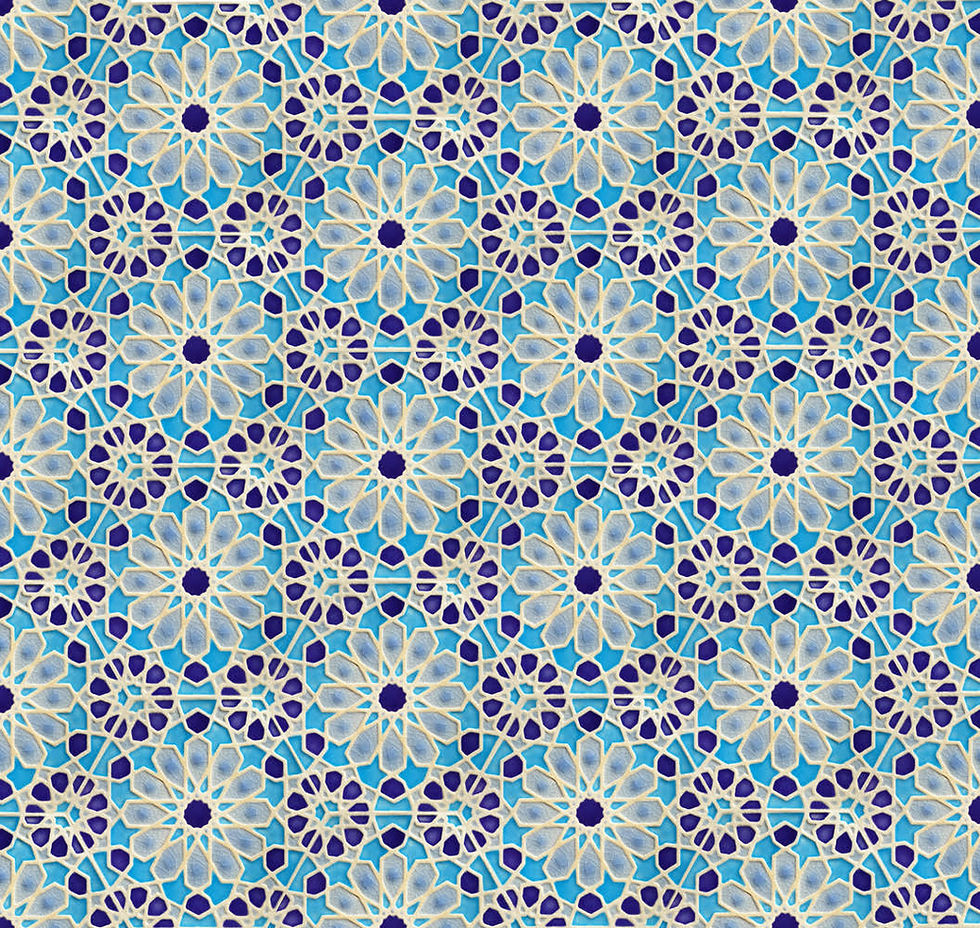
He studied ceramics at the University of Colorado but it was not until he began to explore Moroccan art that he found his niche. Working from within a 1300 year old tradition of geometric design, Barchilon's original patterns pay homage to their sources but imbue them with a modern sensibility.
We talk to Paul about his love for ceramics, travelling as inspiration and the influence of Islamic geometry in his work.

Tell us about your background and your journey to as a ceramic artist?
I first did ceramics in high school, and immediately loved it. I wanted to break all the rules right off the bat. When the instructor told us we should glaze the pots all over, I immediately wondered why, and made several pots that intentionally left glaze off in certain areas. One of these, a bowl I made almost 40 years ago, is still one of my favorite bowls and I eat from it often. In college I took as many ceramics classes as I could and loved exploring things. I took a few years off while I was in a rock band, but then came back to college again and studied ceramics. This time though, I didn’t feel like I was being taught what I wanted to learn. The dominant aesthetic at that time was a loose flowing style, work that was too precise was considered “uptight,” I was told I needed to loosen up. For something to be “decorative” was almost an insult. That summer, 1991, I returned to Morocco and Spain for a visit. There I fell in love with the incredible zellij tiles, and also the elaborate muqarnas. I thought to myself, “THIS is what you should do with ceramics!”
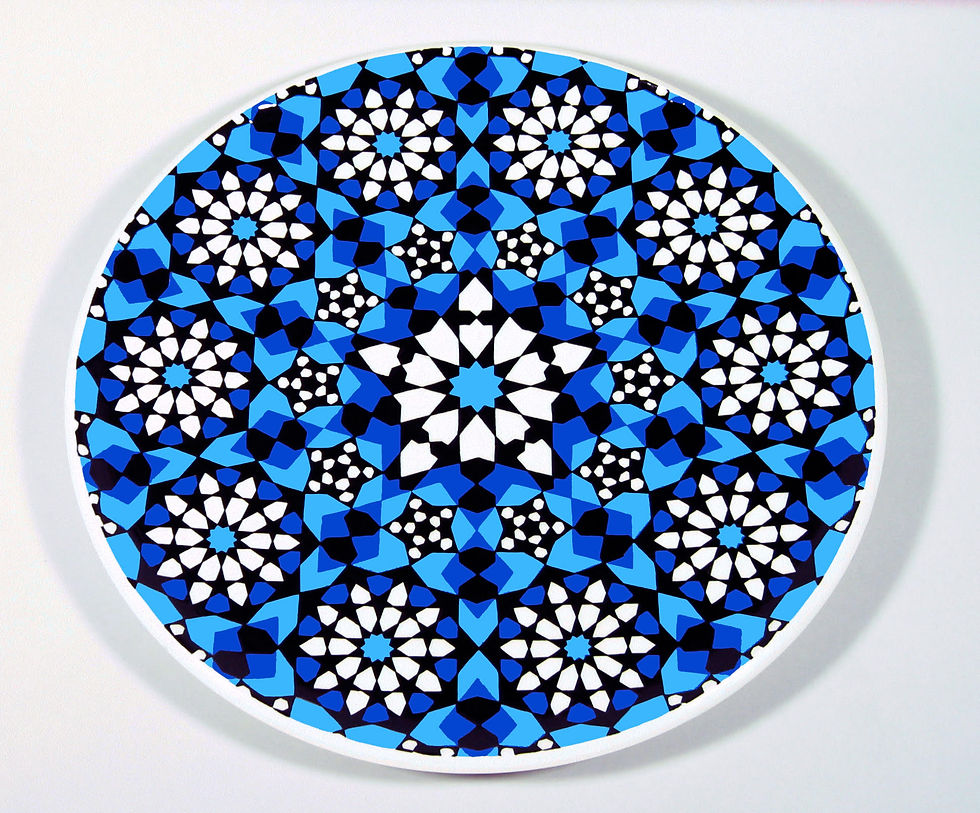
When I returned to the US, I began incorporating Islamic pattern into my work. I had taken rubbings of patterns in Andalusia, and traced some of them in plaster and stamped my work with them. I began making vases that used the patterns, and I painted each area by hand. At the group critiques, my work was not well received. It was again that everything as too “tight,” I was also told the work was derivative and unoriginal. When I talked to the instructor later, I told her I thought the critique was not appropriate for what I was trying to do. If I had shown this work in Morocco, or Iran, they would have said my work was too “loose,” too sloppy, and that I should practice for years before trying to make these things. She responded by asking why I was in art school if I didn’t want to hear what other people had to say about my work. I thought about that for several days, and decided to drop out of school and pursue ceramics on my own.
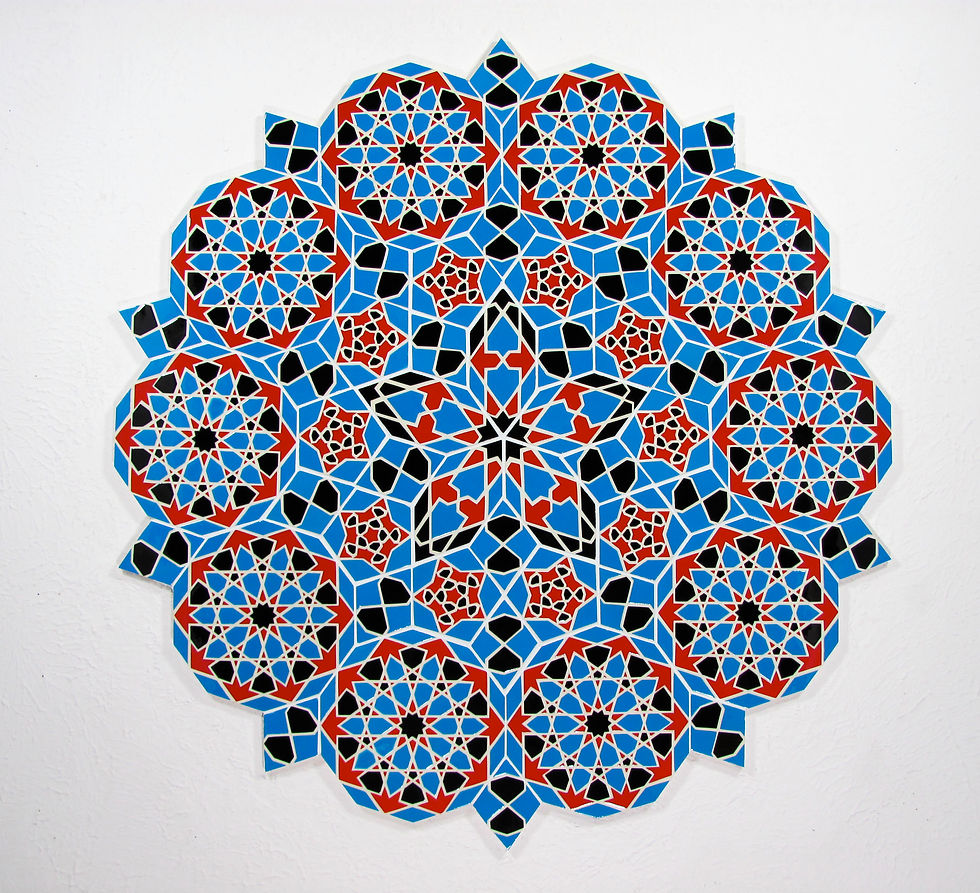
You have travelled the world, researching pattern and line designs in India, Turkey, Spain, Peru, and China. What has been your most memorable moment that impacted your creative practice?
In Marrakesh in 1991, while winding my way through a labyrinthine souk, I came across a man making brass platters in a tiny little shop. I was fascinated by his designs and asked him how he made them. He was kind enough to give me a demonstration. Taking a flat sheet of metal he first drew a single circle, and then divided it into six equal sections simply by setting his compass to the radius of the circle and then marking the divisions around the circumference. From there he drew lines between some of the points, and then again crossing into the center. In no time at all a complex interwoven pattern began to appear. He told me that all of his patterns were stored in his head. Many of them he had learned from his father, others sprang out as he played with the lines. I watched him in awe, but also had an inkling that this was something that perhaps I too could learn to do. I bought some paper and crayons at a small stationeer, and everywhere I went I took rubbings of the tiles. Some of my favorite patterns were found in local bars and one was even found in the men's room of the Alcazar in Sevilla.
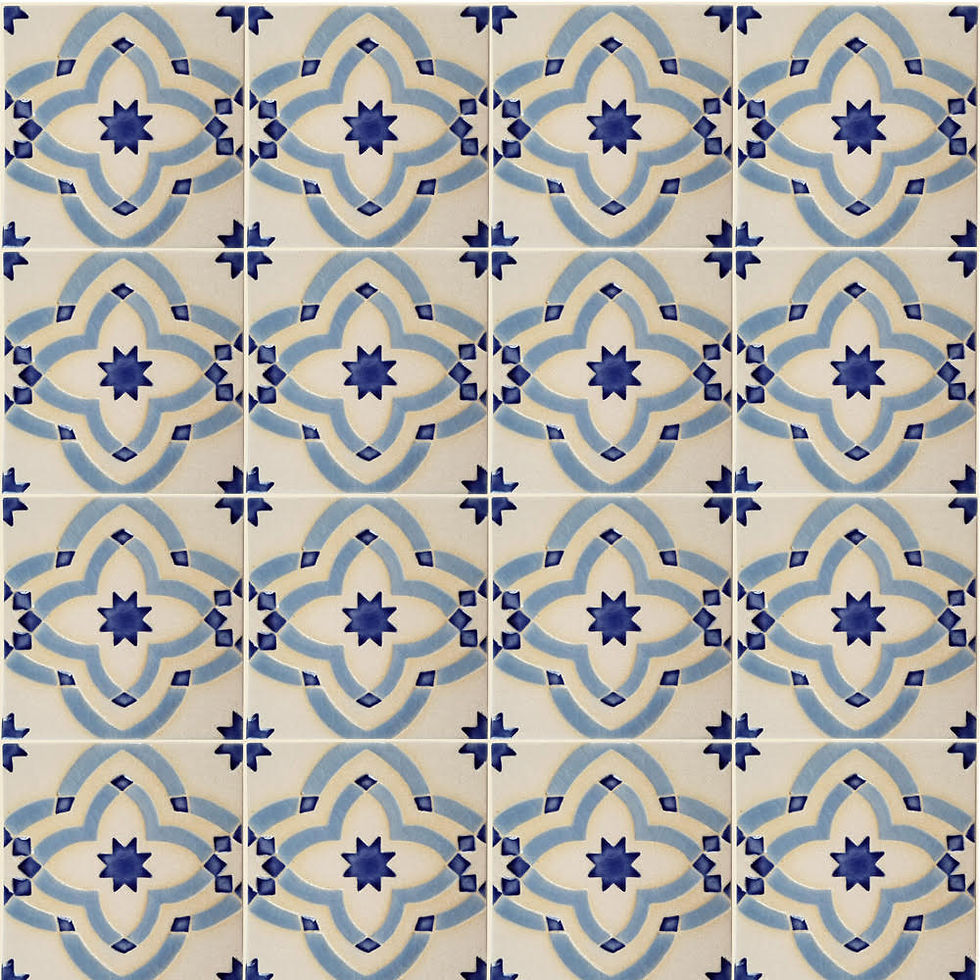
Your work is influenced by Morrocon heritage, why do you feel a connection to Morroco?
My father was born in Morocco and we are Sephardic Jews on his side. These are the Jews that dispersed to Spain and Portugal after the fall of Jerusalem in the first century. During the middle ages, Jews and Muslims lived in harmony and cooperation in Spain. At this time Jews were persecuted savagely throughout Europe, so my personal history is one of being protected from the Christians by the Muslims. In 1492, all the Muslims and Jews were given the choice of converting to Christianity or being killed. My ancestors fled south to Morocco, where they stayed for 17 generations. This is on my grandmother’s side (Barchilon may well be a name we took from Barcelona as we fled). On my grandfather’s side, he told us his family had been in Morocco since the time of King Solomon, so an ancient heritage indeed! As a child, we visited my grandparents in Morocco often. In fact, one of my earliest memories is of being fascinated by the play of light and water reflecting intricate zellij tiles in a fountain in Morocco. Having grown up in two different cultures, I always knew that there were other ways of doing things, and other ways of being, and that has been key to my development as a person and as an artist.
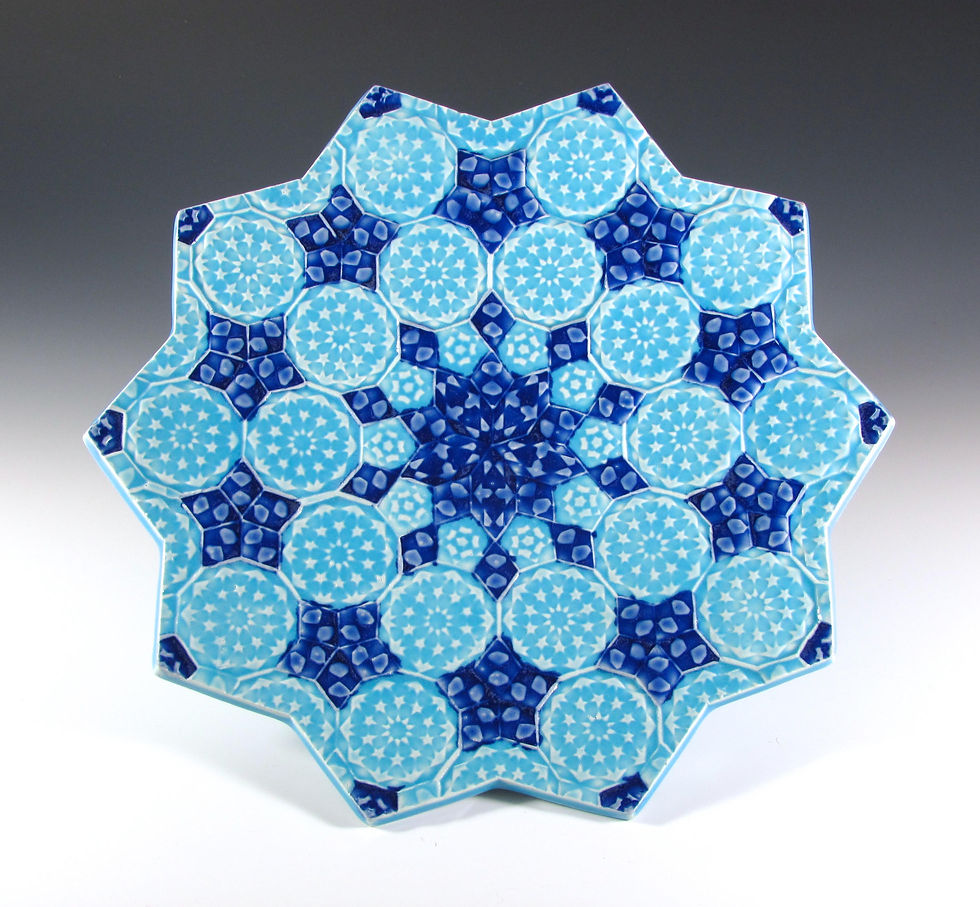
How did you learn the art of ceramics?
Despite leaving college, I had learned enough about ceramics to work on my own. I set up my own studio at home, and worked on things when I had time (usually just the weekend as I worked full time for a living, making photocopies). I began studying Islamic art from the few resources I could find, and began projecting patterns on to platters and then painting them by hand. I started designing my own patterns as well. There were lots of gaps in my technical knowledge, but I always experimented and tried to find a way to do things. In 2003 I developed a repetitive strain injury that led to losing my job in the photocopying industry. After over 15 years, I was ready to leave, and it became the turning point that allowed me to pursue ceramics full time. Once I was working with clay every day, I learned more and more. I often created my own solution to a given problem in ceramics, and ended up inventing my own ways of doing things that were quite distinct from what is normally taught in classes (especially in the US). Often this has meant reinventing the wheel, but it has also freed me to explore new (or often ancient) ways of accomplishing something.
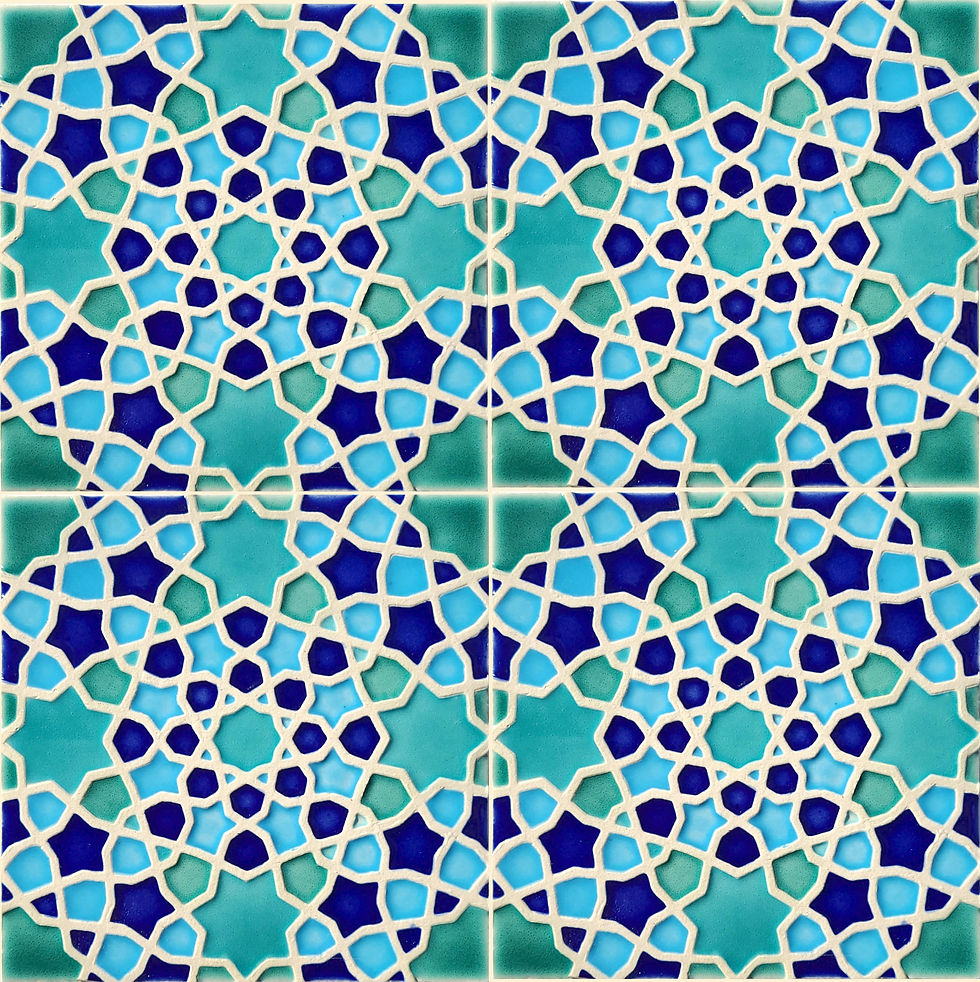
What is your creative process from start to finish?
Everything begins in pencil on paper. I begin with a circle, and usually am playing with different divisions. Trying to make patterns that are new, and combining different numbers. One of my most popular patterns is in a hexagon, with a 12 fold star in the middle, and 9 fold stars at the corners. I recently designed a new pattern that uses 12, 8, and 7 and I am very proud of that. Currently, tile making is my focus. I usually scan my pencil drawing and then manipulate it on the computer. I also will often redraw the pattern on the computer so it is precise, and then use a digital cutter to make a stencil in either cardstock or vinyl. From there I roll it into wet clay and use underglazes to paint the areas, and then remove the stencil. Often this is a two part stencil with multiple colors. I also make relief molds cast in plaster, and make impressed tiles from them. After an initial firing, I paint each area with a glazes, and then fire again to cone six (2,232 Fahrenheit). Everything about my process is completely manual, and it takes many, many hours. I consider my work “fast” compared to how time consuming Zellij is though.

Where do you find inspiration for the delicate yet bold colours you use in your work?
Developing colors in ceramics is a very complicated and tedious process, and everything must be tested on each clay body. It has taken me years to develop glazes I like and that will work consistently. I am always attracted to bright color, like the zellij tiles of my youth. I began exploring some pastels only recently, after being influenced by some of the amazing artists doing Islamic Geometry on Instagram.
Has Islamic geometric design influenced your work?
My work has been solely Islamic Geometry for about 30 years now. I don’t do anything else.
Which piece have you made that you are most proud of and why?
I have a platter I painted that I call Timurid Ten-Step. It took me forty hours to paint, and was the first pattern I did with Girih tilings. I also do a larger version of this in tile for wall installations. Once I learned about these kinds of tilings, I was very excited to use them. I have done many patterns that use the Girih shapes, and they can be combined in an infinite variety of ways. I have created my own patterns inside the Girih shapes, and sometimes I ignore the traditional rules about how lines should cross inside a shape and come up with my own variations.
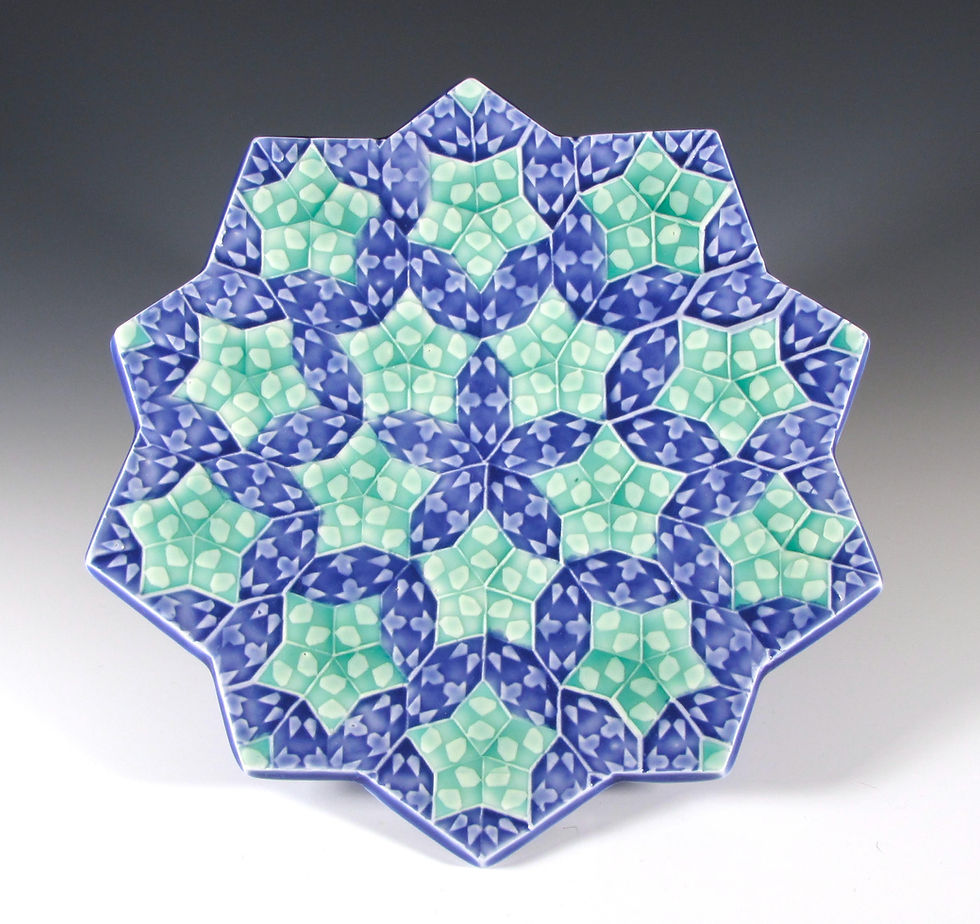
Are you working on any current projects or exhibitions you can share with us?
I have begun exploring dual level patterns, which are patterns that show both a micro and a macro pattern when you are at a distance. I noticed this first at the Alcazar in Sevilla. I was looking at a profusion of zellij shapes that were colored oddly on a wall. Later, when I was on the other side of the courtyard, I looked across and noticed that there was a secondary pattern on a massive scale that was created by the colors. Now it all made sense, you couldn’t even seen the macro pattern when you were up close, it required distance. I have been learning how to make these thanks to some excellent online classes from the Prince’s School for the Traditional Arts. I posted an image on Instagram of an idea I had for a dual level pattern, and within a few days a friend of mine commissioned me to make it on his wall. It is over five feet square, and as it was local I was able to install it myself as well. Almost all of my work is in people’s homes. I tried the museum and gallery approach, but it never worked for me. I am very happy as a modern yet traditional craftsman making people’s spaces beautiful.

What does the future of Islamic arts and culture look like to you?
There is so much division, conflict, and mistrust in the world. I have always felt that art is a way to build bridges. I did a visiting artist program in the public schools here for 15 years. I taught 12 and 13 year old kids how to make Islamic Art, and I was their introduction to Islamic culture and history as well. Once the kids learned how to do it, they were fascinated by it, and loved seeing images of mosques and palaces from all over the world. Education is the key to everything. If we can teach people something beautiful from another culture, then they can come to appreciate it. Only by respecting the cultures and traditions of all peoples can we find a way to live in peace with each other. I hope that the arts can overcome the divisions we see around us, and that by celebrating the beauty of Islamic Art east and west can come together.
For more information check out http://barchilonceramics.com
The views of the artists, authors and writers who contribute to Bayt Al Fann do not necessarily reflect the views and opinions of Bayt Al Fann, its owners, employees and affiliates.









I appreciate you sharing such thoughtful content. it’s an absolute must-read ! Real Pune Service {} Chennai Service {} High-Prole Chennai Service {} Trusted Hinjewadi Service {] Independent Wakad Service {} Real Baner Service {} Hotel Escorts In Pune {} Pimple Saudagar Service {} Bavdhan Service {} Kothrud Service {} Magarpatta Service {} Lonavala 410401 (+) Ravet 410121 (+) Wakad 411057 (+) Hinjewadi 411057 (+) Baner 411045 (+) Aundh 411007 (+) Pimple Saudagar 411021 (+) Shivaji Nagar 411027 (+) Kalyani Nagar 411014 (+) Viman Nagar 411014 (+) Magarpatta City 411013 (+) Pimpri Chinchwad 411033
Best IPTV Unlock stunning 4K quality with a wide range of live TV channels and on-demand content for an unbeatable viewing experience.. Best IPTV
Click here provide members with discounts on over-the-counter medications, vitamins, and health essentials, promoting better health management and cost-effective wellness solutions. kaiserotcbenefits.com - more details here
Click here help you find recent death notices, providing information about funeral services, memorials, and tributes for loved ones in your area. obituariesnearme.com - more details here
Click here? Many users have had mixed experiences with the platform, so it's important to read reviews and verify deals before booking. istravelurolegit.com - more details here
代发外链 提权重点击找我;
google留痕 google留痕;
Fortune Tiger Fortune Tiger;
Fortune Tiger Fortune Tiger;
Fortune Tiger Slots Fortune…
站群/ 站群;
万事达U卡办理 万事达U卡办理;
VISA银联U卡办理 VISA银联U卡办理;
U卡办理 U卡办理;
万事达U卡办理 万事达U卡办理;
VISA银联U卡办理 VISA银联U卡办理;
U卡办理 U卡办理;
온라인 슬롯 온라인 슬롯;
온라인카지노 온라인카지노;
바카라사이트 바카라사이트;
EPS Machine EPS Machine;
EPS Machine EPS Machine;
EPS Machine EPS Machine;
무료카지노 무료카지노;
무료카지노 무료카지노;
google 优化 seo技术+jingcheng-seo.com+秒收录;
Fortune Tiger Fortune Tiger;
Fortune Tiger Fortune Tiger;
Fortune Tiger Slots Fortune…
站群/ 站群
gamesimes gamesimes;
03topgame 03topgame
EPS Machine EPS Cutting…
EPS Machine EPS and…
EPP Machine EPP Shape…
Fortune Tiger Fortune Tiger;
EPS Machine EPS and…
betwin betwin;
777 777;
slots slots;
Fortune Tiger Fortune Tiger;